Key Findings on AI Governance Strategy
-
An AI governance strategy is a comprehensive framework of roles, rules, and safeguards that ensures AI is used responsibly, securely, and in compliance with evolving regulations.
-
Strong governance structures encompass the entire AI lifecycle, encompassing data classification, identity and access management for AI, prompt guardrails, model oversight, and vendor controls to prevent misuse and data leaks.
-
Core pillars include data lineage, Role-Based Access Control/Policy-Based Access Control (RBAC/PBAC) rules, prompt filtering, standardized labeling, real-time monitoring, and retirement protocols, all designed to reduce operational and reputational risks.
-
Strategic execution involves tiering risks, setting clear policies, assigning accountable roles, enforcing IAM and prompt safeguards, and auditing vendors and outputs.
What is an AI Governance Strategy
As Springer’s AI Governance Handbook states, AI governance strategy represents a formal, enterprise-level framework of policies, controls, roles, and technical guardrails that ensures AI systems are developed, deployed, and used responsibly and securely. It addresses ethical, legal, operational, and risk dimensions. The goal is to prevent data leaks, misuse, bias, and other harms while still enabling innovation and scaling AI safely. An effective strategy includes defining what is acceptable and unacceptable behavior by AI, establishing accountability, clarifying data handling procedures, enforcing identity and access rules, monitoring performance, managing vendor risks, and ensuring continuous compliance. It must cover the entire AI lifecycle, from use case design and data collection to model training, deployment, and monitoring, and through to retirement.
According to a 2025 Cornell University review, Toward Effective AI Governance, frameworks such as the NIST AI Risk Management Framework and ISO/IEC 42001 explicitly emphasize transparency and accountability as foundational principles of governance. Additionally, according to the IBM Cost of a Data Breach Report 2025, 97% of organizations that experienced a breach involving AI reported lacking proper AI access controls, underscoring how gaps in governance are already incurring significant financial costs.
An AI governance strategy is not a one-off project. It is a living, evolving set of measures. It must adapt to changing risk thresholds, regulatory developments (such as the EU AI Act), emerging threats (including model inversion, prompt injection, and shadow AI), and shifts in organizational use cases.
Key Components of an AI Governance Strategy
Data governance provides the foundation for safe and transparent AI by ensuring that data is classified, traceable, and handled in accordance with legal and business requirements. By defining rules for classification, lineage, retention, and residency, organizations build trust in how data powers AI systems.
Data Governance
According to a study published in 2020, data governance ensures that the inputs and outputs of AI are managed to minimize risk and ensure transparency. Classification involves labeling data according to its sensitivity level (public, internal, confidential, or regulated). Lineage refers to the ability to trace the origin of data, its processing, and its use in model training. Retention refers to the determination of how long data is stored, considering privacy laws, storage costs, and risk, as well as the deletion of data when it is no longer needed. Residency refers to the location where data is stored (geographically or jurisdictionally), which is essential for laws such as the EU General Data Protection Regulation (GDPR), data localization, and cross-border transfer restrictions.
Poor data governance increases risk. The IBM report quoted above notes that many breaches involved compromised datasets or unauthorized access to data. Sound classification, retention policies, and residency constraints reduce exposure. To improve clarity, organizations often use a simple data classification matrix by risk tier (public, internal, confidential, regulated). A visual like this makes it easier to align data handling with controls and auditing requirements.
Table. Data classification matrix
|
Risk Tier |
Definition |
Examples |
Controls Required |
|
Public |
Information intended for open access; disclosure poses no risk. |
Press releases, marketing brochures, and published research. |
No restriction; monitor for integrity. |
|
Internal |
Operational or business-use only; disclosure could cause minor internal disruption. |
Internal memos, project documents, and non-sensitive financial data. |
Access is limited to staff; basic logging and password protection are in place. |
|
Confidential |
Sensitive business or personal data; unauthorized access could cause harm or liability. |
Customer records, proprietary algorithms, employee performance data. |
RBAC and PBAC; encryption in transit & at rest; detailed audit logs. |
|
Regulated |
Strictly controlled by law/regulation (e.g., GDPR, HIPAA); disclosure leads to significant penalties. |
Health records, payment card data, government ID numbers. |
Highest safeguards; DPIA required; geo-residency; strict retention & deletion rules. |
Identity And Access Management (IAM)
IAM is about controlling who or what (users, AI agents, services) can access what data, models, or system components. RBAC assigns permissions based on predefined roles (e.g., data scientist, engineer, auditor). PBAC is more dynamic, as it allows rules to evaluate context (time, risk level, sensitivity), enabling access to be granted or denied based on more than static roles.
In AI settings, non-human identities, API keys, model endpoints, and AI agents must also be managed. Another 2025 survey shows that 85% of security professionals now view IAM as necessary because AI agents complicate identity lifecycles. IBM’s Cost of a Data Breach Report found that 97% of AI-related breaches lacked proper access controls, meaning gaps in IAM are a primary failure point.
Best practice is to enforce an RBAC baseline to handle standard roles and overlay PBAC policies to implement least privilege, time-bound access, separation of duties, and other security controls. Log all access (both human and machine identities), review permissions regularly, and deprovision immediately when roles change.
AI Prompt Guardrails
Guardrails manage how users and systems interact with generative AI or LLMs. Input filters block unsafe or disallowed inputs (prompts that attempt to leak PII, instruct the model to disobey policy). Output validation checks model responses before release, looking for harmful content, policy violations, hallucinations, or extraction vulnerabilities. Do-not-answer rules are explicit policies that the model refuses to answer on specific topics or with certain content. These guardrails are necessary because large‐scale models can produce unsafe or undesirable content. They also reduce the risk of data leakage via prompt injection or via Retrieval-Augemented Generation (RAG).
AI Data Labeling Strategy
AI data labeling and data evaluation are other central components. Safety labels mark whether the content could be harmful. Relevance labels signal which data is relevant to the intended domain or audience. Provenance labels capture origin, ownership, and transformation history. Ultimately, all labels should be tied to risk tiers: data used for high-risk AI systems must adhere to stricter labeling standards, provide more provenance, and achieve higher accuracy.
Poor labeling is a frequent source of bias, unfairness, and inaccuracy.
A notable failure occurred in 2015 when Google Photos misclassified images due to inadequate annotation practices, resulting in reputational harm and necessitating technical remediation. Facebook has also faced scrutiny for annotation inconsistencies in hate speech datasets, where poor provenance labeling reduced model effectiveness.
Model Lifecycle
Model lifecycle governance involves defining stages in model development and deployment, along with formal gates for review and approval. Before training, there should be requirement collection and risk assessment. After training, validation against accuracy, fairness, and robustness metrics. Before deployment, penetration testing, security testing, and compliance checks. During operation, the focus should be on monitoring for drift, bias, user behavior testing, and safety.
Moving on, retirement criteria include identifying when performance falls below thresholds, or when the model is obsolete or replaced, or legal or risk regimes change. Research shows many models take a long time to deploy. SAS research shared in the interactive guide, Mastering Model Lifecycle Orchestration, found 44% of models take over seven months to deploy.
Model governance must document versions, track changes, and ensure reproducibility to maintain consistency and accuracy. Change control ensures that only approved modifications go live, with rollback paths in place. Retirement criteria are clear when a model must be removed or disabled.
Monitoring And Observability
Monitoring involves continuously observing how the model behaves in production. Usage metrics include who uses it, the frequency of use, and the context in which it is used. Quality metrics include accuracy, bias, error rates, output validity, and drift detection. Security metrics detect anomalies, unauthorized access, and data leakage. Cost metrics track compute, storage, latency, and maintenance, both to manage cost and to ensure cost doesn’t become a risk vector (cutting corners on security because of cost pressures).
Scholarly reviews note that existing governance frameworks often omit strong mechanisms for monitoring or observability. The Review of Principles post mentioned earlier indicates that few works provide detailed, actionable mechanisms for post-deployment monitoring. IBM’s data shows that organizations using AI and automation to detect and contain breaches had lower average breach costs ($3.62 million) compared to those not using them ($5.52 million). Implement observability that encompasses logging, dashboards, alerts, drift detection, bias regression, cost-benefit analysis, and model health checks.
Risk And Compliance
Risk and compliance cover legal, ethical, and regulatory risk. A Data Protection Impact Assessment (DPIA) is used to assess how processing might impact privacy, particularly for high-risk data or use cases. It’s critical to maintain records of processing, logs of decisions, documentation of model performance, changes, and audits.
Additionally, transparency means being able to explain clearly and document model choices, data sources, evaluation methods, bias mitigation steps, and governance decisions. Regulator mapping involves tracking which laws/regulations apply (e.g., GDPR, EU AI Act, HIPAA, CCPA) and ensuring that policies align accordingly. Additionally, regulatory mapping must encompass multiple jurisdictions if operating globally, as the residency of data, cross-border transfers, and sector-specific rules are relevant.
Why is AI Governance Strategy Necessary for Enterprises
AI governance is now a business necessity because trust, brand reputation, and regulatory compliance are all at stake. A single misuse can trigger customer loss, media backlash, and investor concern. Governance strategies that enforce safe data usage, access controls, and guardrails help prevent such incidents while demonstrating responsibility to customers, regulators, and partners. Without these protections, enterprises risk lawsuits, fines, and long-term damage to their reputations.
Regulatory and operational pressures make governance equally critical. Frameworks like the EU AI Act, GDPR, and sector-specific regulations require evidence through audit trails, DPIAs, and continuous monitoring, rather than relying solely on policy statements. At the same time, governance accelerates AI deployment by defining clear gates, roles, and ownership, reducing costly rework caused by poor data quality, misaligned permissions, or model drift. With structured lifecycle governance, enterprises shorten deployment timelines, maintain compliance, and achieve efficiency without sacrificing safety.
Steps to Develop an AI Governance Strategy
An effective AI governance lifecycle begins with a complete inventory of use cases and clear risk tiering, creating the foundation for all downstream controls and compliance. The following table outlines the key steps in the lifecycle involved in this process.
AI governance lifecycle checklist
|
Step |
Actions |
Outputs |
|
1. Inventory and risk tiering |
List AI use cases, map data sources, classify sensitivity, assign risk tiers, and align with the EU AI Act. |
Risk map, data inventory, sensitivity matrix. |
|
2. Define principles and policy stack |
Draft responsible-AI principles, write policies, standards, procedures, and playbooks. |
Enterprise-wide AI governance framework and onboarding summary. |
|
3. Assign RACI and approvals |
Define owners, approvers, and auditors; document escalation paths; align with NIST AI RMF functions. |
Governance board chart, approval registers, escalation flow. |
|
4. Implement IAM and guardrails |
Enforce RBAC baseline + PBAC policies; rotate tokens; add prompt filters and output validation. |
IAM enforcement logs, prompt guardrail triggers, and access reviews. |
|
5. Stand-up evaluations and logging |
Conduct red-team and RAG tests; capture tamper-evident logs; export to SIEM. |
Evaluation reports, SIEM exports, and change logs. |
|
6. Pilot, measure, and iterate |
Run controlled pilot; track usage, quality, security, cost; refine policies in sprints. |
Pilot KPI dashboard, iteration report, updated policies. |
|
7. Scale and audit |
Expand enforcement points, automate reviews, prepare audit packs, and schedule recurring regressions. |
Audit-ready evidence packs, board-level metrics, compliance regressions. |
How Knostic Operationalizes Your AI Governance Strategy
Knostic enforces AI governance at the knowledge layer, the point where oversharing and inference risks emerge. It systematically discovers leaks and simulates real employee queries to reveal cross-document inferences that bypass file permissions. Enforcing least-privilege boundaries at answer time ensures AI systems honor existing IAM, RBAC, and Purview rules without reshaping responses or requiring changes to the underlying data estate.
The platform also generates precise policy and label recommendations based on observed oversharing patterns, providing continuous monitoring and maintaining audit-ready trails that show who accessed what and how. These records help satisfy regulators and boards while highlighting where data loss prevention (DLP) or RBAC controls fail, enabling faster remediation and improvement.
In practice, Knostic closes last-mile gaps, strengthens compliance posture, and delivers measurable evidence that AI governance is effective in real-time.
What’s Next?
The next step is to put the pieces into motion with a structured plan. If you want a deeper blueprint, read the Knostic white paper on LLM data governance here:
https://www.knostic.ai/llm-data-governance-white-paper
FAQ
-
Why is an AI governance strategy necessary for enterprises?
AI governance is essential because it protects trust, brand reputation, and compliance in an era where AI misuse can instantly trigger regulatory scrutiny, media backlash, or financial loss. A strong strategy ensures responsible use, prevents oversharing, and demonstrates accountability to regulators, boards, and customers. -
What are the key components of an effective AI governance strategy?
Core components include data governance (classification, lineage, residency, retention), IAM with RBAC and PBAC controls, AI prompt guardrails, standardized labeling, lifecycle oversight, monitoring and observability, and vendor governance. Together, these pillars reduce operational, legal, and reputational risks while enabling safe innovation. -
How does Knostic help operationalize AI governance?
Knostic enforces governance at the knowledge layer, where oversharing is often a concern. It simulates real queries to detect inference risks, enforces least-privilege boundaries at answer time, and generates policy and label recommendations. It also provides continuous monitoring and audit-ready evidence, helping enterprises demonstrate compliance while accelerating the safe adoption of new technologies.




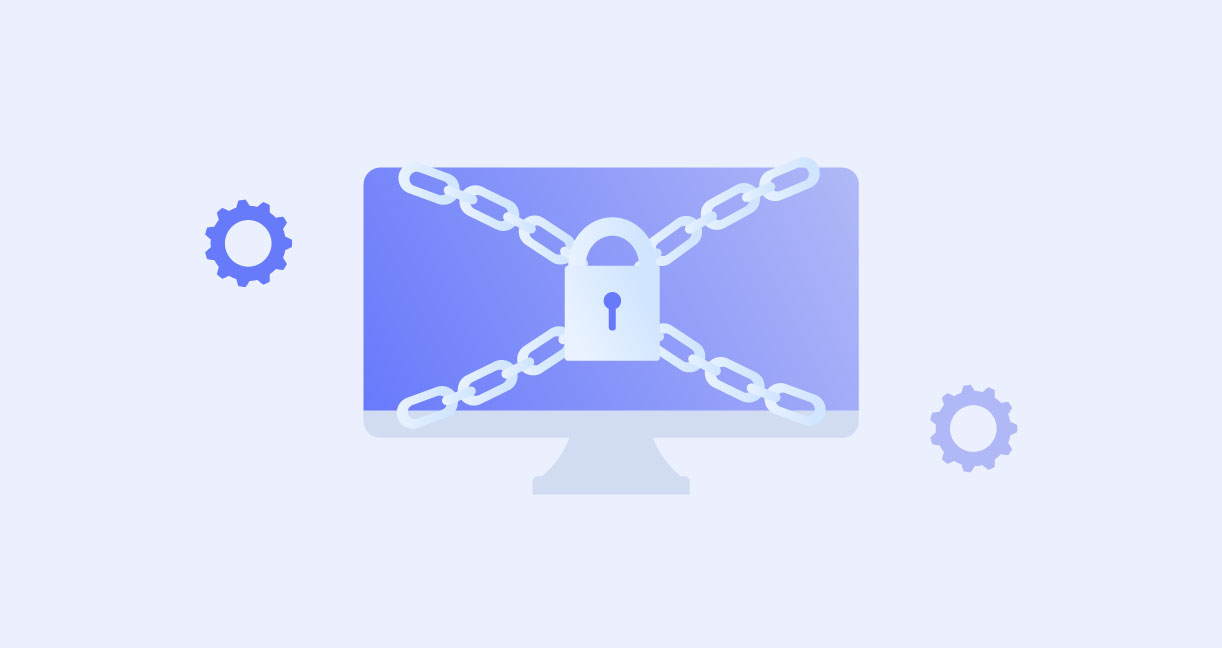


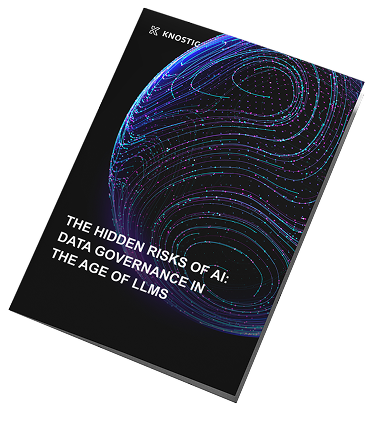
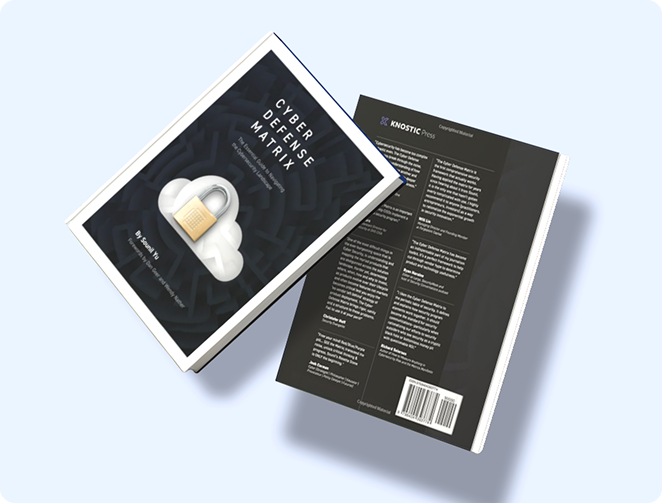
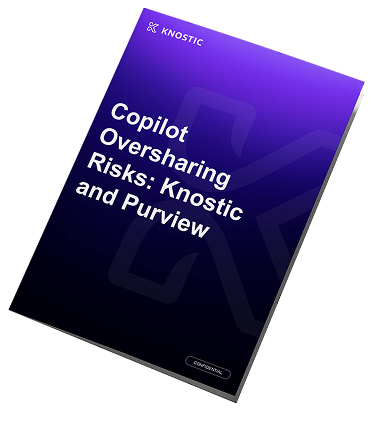

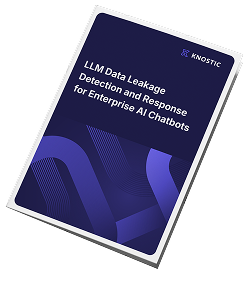
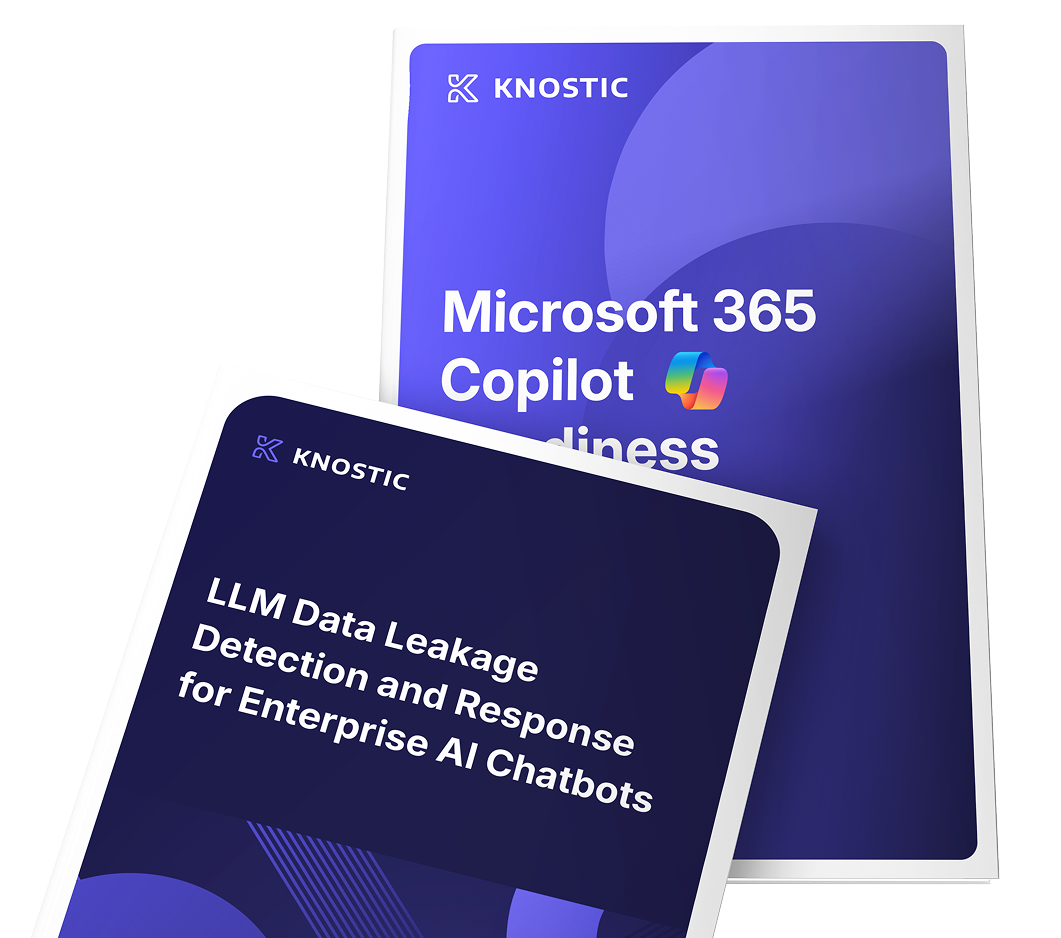
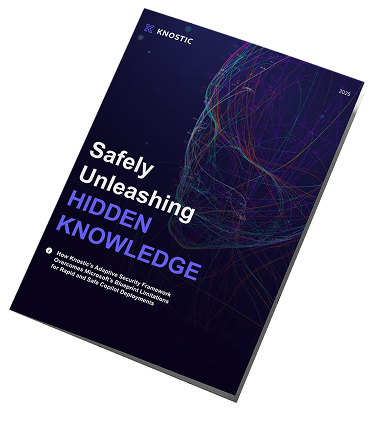
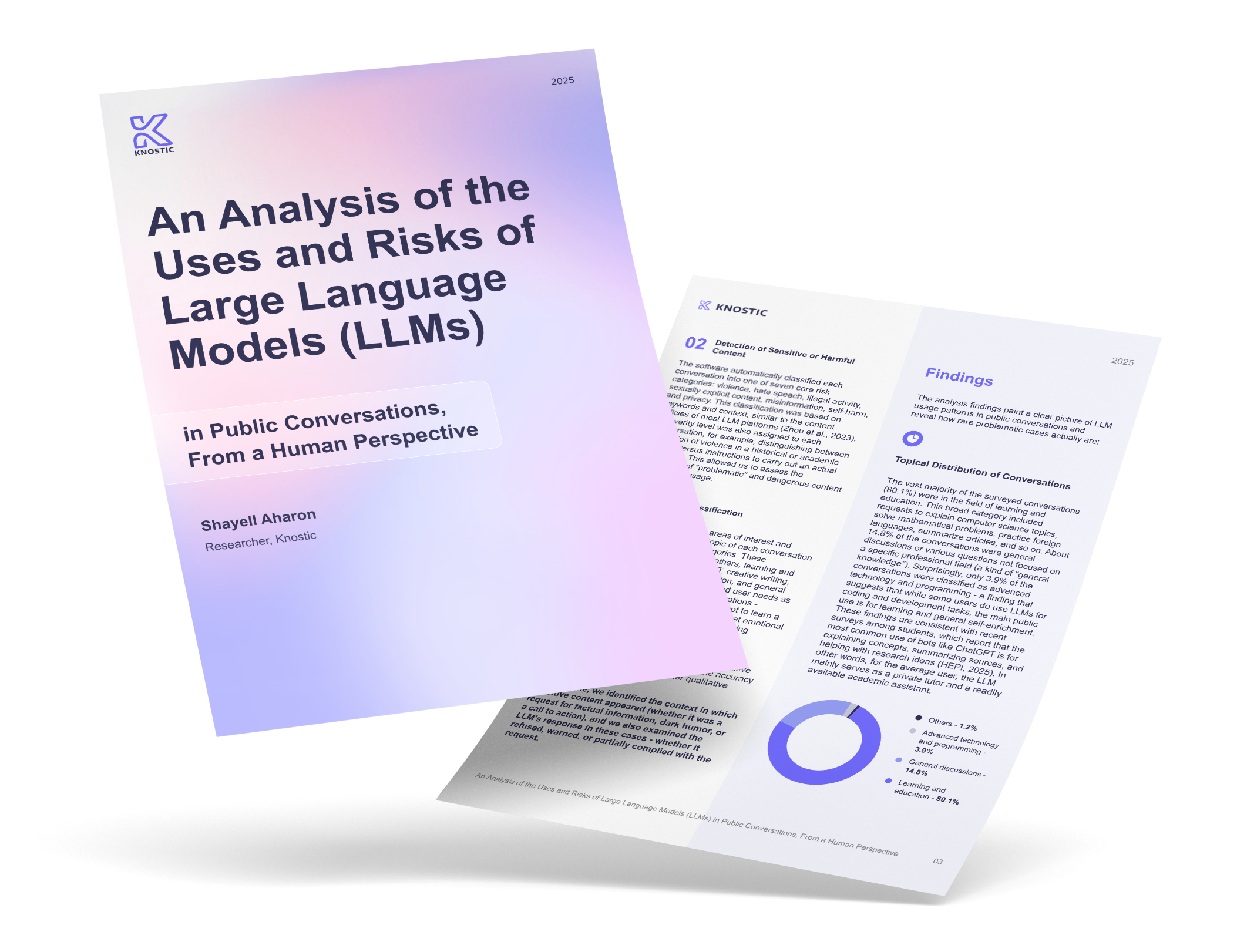




![AI Data Governance Guide for Enterprise Teams [2025]](https://www.knostic.ai/hs-fs/hubfs/What-is-AI-data-governance.jpg?width=520&height=294&name=What-is-AI-data-governance.jpg)

